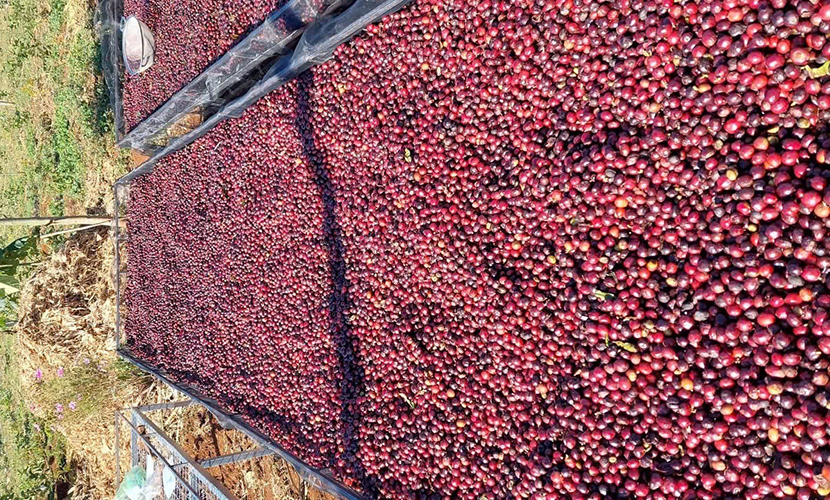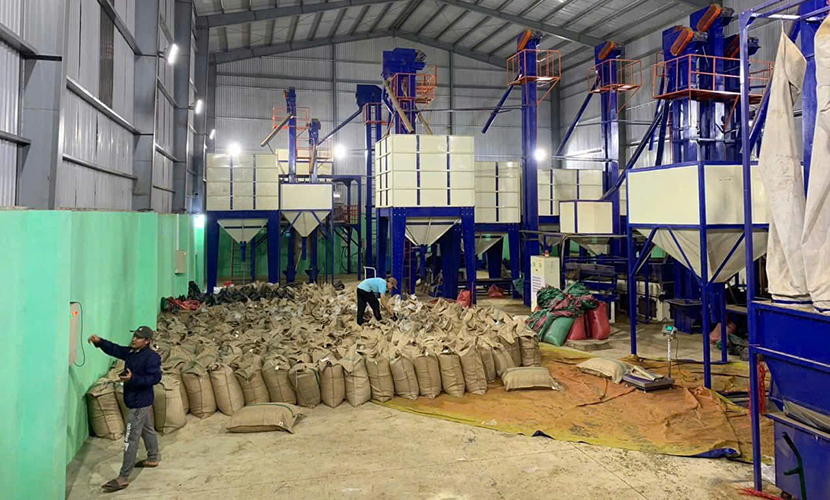
Over the past nine months, Vietnam’s coffee exports reached 1.23 million tons, worth $6.98 billion. They showed a volume increase of 11.1% and a value rise of 61.4% compared to the same period last year.
This result has already surpassed the total export value of 2024, which stood at $5.48 billion. To maintain a long-term advantage for the coffee industry, innovation in production is essential. The promotion of deep processing also plays a decisive role.
Mr. Nguyen Nam Hai is the Chairman of the Vietnam Coffee and Cocoa Association. According to him, in the 2024–2025 crop year, Vietnamese coffee export prices have reached the highest levels ever recorded, peaking at $5,850 per ton at certain times.

Vietnam’s coffee exports
As of the end of September 2025, the average price of Vietnam’s coffee exports was $5,658 per ton. This price went up 45.3% year-on-year, pushing export earnings to a record high. Data from the Ministry of Industry and Trade also show that Vietnam’s coffee exports grew across almost all product categories.
Vietnamese robusta coffee remained the key export, reaching 949.6 thousand tons worth $4.91 billion. It was an increase of 5.8% in volume and a sharp rise of 57.3% in value. Meanwhile, arabica coffee exports also posted strong growth, totaling 60.5 thousand tons. Specifically, the export value reached $401.3 million, up 13.2% in volume and 120.3% in value.
Particularly, processed coffee exports have become a new growth driver, hitting $1.18 billion, up 63.5% year-on-year. Given the rapidly growing demand for processed coffee, Vietnam’s coffee industry must quickly enhance processing capacity and standardize quality. It must also build a national brand to sustain its competitive edge.
In the U.S. market, Vietnam ranked as the fourth-largest coffee supplier in the first seven months of the year. Vietnam exported 70.6 thousand tons worth $412.4 million. It showed a volume decrease of 12.7% but a 49% value increase compared to the same period last year.
According to the U.S. National Coffee Association, coffee consumption in the U.S. remains high and stable. About 66% of adults drink coffee daily, averaging three cups per person.
Consumption trends are shifting toward deeply processed coffee, specialty coffee, espresso, and home brewing. In the context of the U.S. imposing a 50% tariff on Brazilian coffee and severe drought pushing up Arabica prices, roasters have been forced to adjust.

Fresh coffee from Vietnam
They are increasing imports of robusta and diversifying supply sources from Colombia, Central America, and Vietnam. This presents a favorable opportunity to boost Vietnam’s coffee exports to the U.S., especially in the processed coffee segment.
However, in some nearby markets, Vietnam’s coffee exports have declined in both volume and value, such as in Thailand. During the first seven months of the year, Vietnam still remained the second-largest coffee supplier to Thailand. However, the exports reached only 5.63 thousand tons worth $30.14 million. They showed a sharp fall of 76.1% in volume and 63.1% in value year-on-year.
Vietnam’s share of Thailand’s coffee imports fell from 67.11% in the first seven months of 2024 to 25.9% this year. The main reason is that Vietnamese coffee enterprises have not been quick or effective enough in shifting toward processed coffee products. Meanwhile, demand for such items in Thailand is rising strongly.
Alongside processing, to sustain growth momentum and long-term competitiveness in global markets, Vietnam’s coffee exports must be standardized right from the production stage. This will allow them to gradually build their own brand identity.
Mr. Ngo Quoc Vu is the Deputy Head of a coffee exporting company in Vietnam. According to him, the company’s coffee-growing areas now meet the EU Deforestation Regulation standards, ensuring stable access to the European market.

Vietnamese coffee factory
His company has implemented a digital agricultural mapping system covering tens of thousands of farming households. It also operates a traceability platform for each shipment, allowing customers direct access to transparent information from the farm level. The company also supports farmers in adopting low-emission production practices to strengthen the competitiveness of Vietnamese coffee.
Recently, the company distributed bio-organic fertilizers under a “low-carbon agriculture” initiative, supporting 400 farming households with a total value of 650 million VND. It is not only an exporter but also a partner accompanying farmers throughout the production journey.
According to forecasts from the Ministry of Industry and Trade, global coffee supply will be able to improve significantly in the near future, especially in Vietnam and Brazil. In the 2025–2026 crop year, Vietnam’s coffee output is projected to reach 1.76 million tons, equivalent to 29.4 million 60-kg bags, up 6% from 2024. This will be the largest harvest since the 2021–2022 crop year, helping to ease global supply shortages.
As a result, many roasters and processors are currently delaying purchases in anticipation of price adjustments. Therefore, the world coffee prices are expected to decline in the short term. Therefore, focusing on high-quality production and deep processing to maintain export prices remains the key solution. This approach helps Vietnamese coffee exports sustain its target markets amid global fluctuations.
Vietnamese source: https://nhandan.vn/giu-loi-the-cho-nganh-ca-phe-viet-nam-post920130.html
